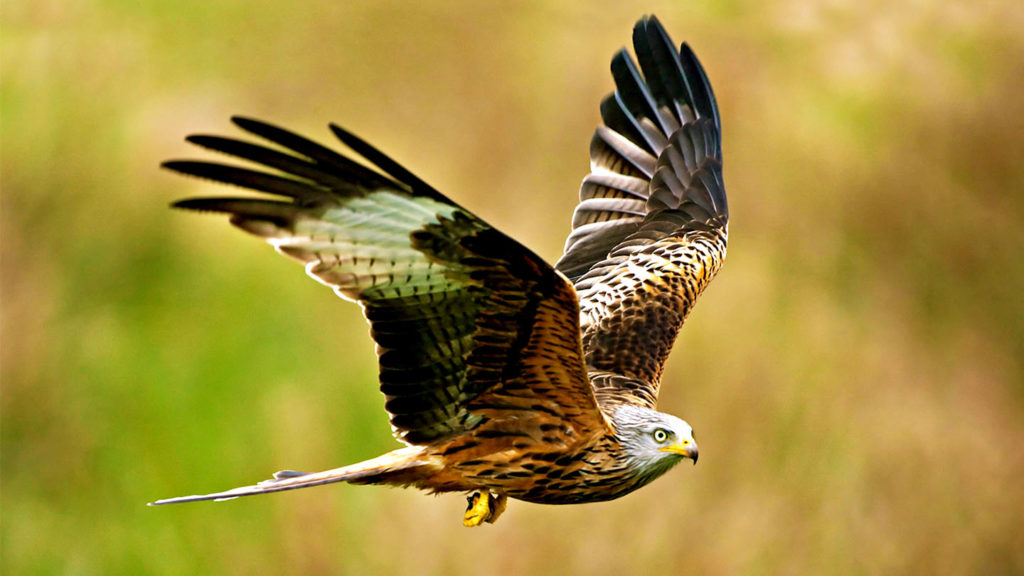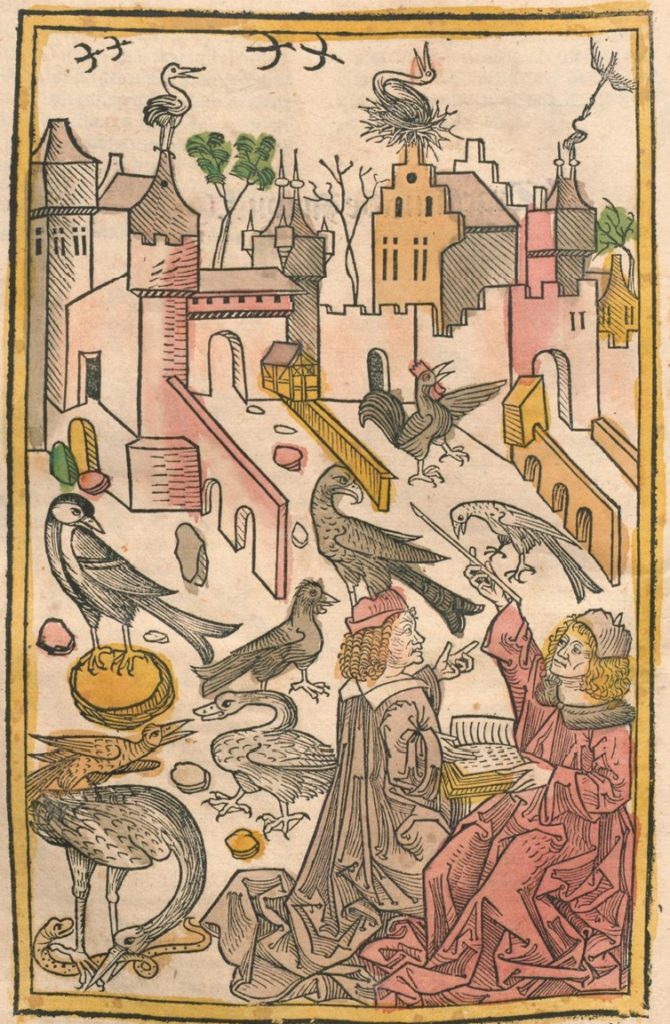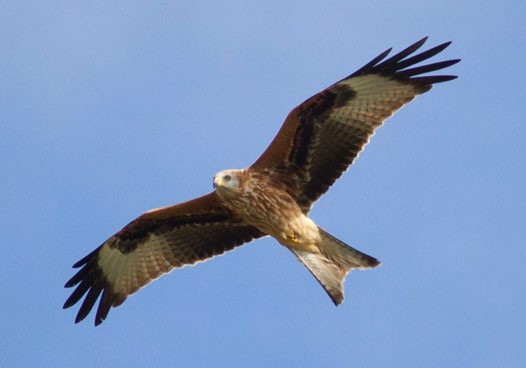
Red Kite in flight – image by David J Slater
Red Kites are increasingly being seen and reported flying over Bredfield. At the start of 2022, there were at least three sightings in the first few weeks. This is cause for celebration. Red Kites have come back from the brink and they are now a favourite bird of many people. They cruise overhead, slowly and confidently angling their fork tail and long wings to master flight. When the sun illuminates their red feathers, they look magnificent!
Red Kites are still far from a common sight in East Suffolk, but it would not be unusual for you to see one in flight, especially in Spring. Ten years ago, a Red Kite would have been quite a rare sight here, and fifty years ago there would have been none. Indeed, fifty years ago there were only a handful of birds in Britain; hanging-on in the wooded valleys in of mid-Wales.

The history of the plight of Red Kites, is a telling tale about how our perception and labelling of nature is relative and shifts over time. In medieval times, Red Kites were extremely common in British cities, especially London. They served a crucial service, clearing up the carcasses and rotting meat that littered London streets. This service was recognized and the birds were protected by Royal Assent. Killing a Red Kite was a capital offence.
This had all changed by the mid-16th century, when the status of Red Kites had shifted from royal protection to being labelled ‘vermin’. Parishes paid bounty for the killing of Red Kites. Mistakenly, these birds were seen as killers and robbers of livestock and domestic animals. They were shot, trapped and poisoned until they were almost extinct in the British Isles. The same persecution was happening across the channel in mainland Europe.
In the 20th century, perceptions changed and actions began to be taken to save the Red Kites. So few birds remained in central Wales (only two nesting pairs in the 1930s), that the dwindling gene pool threatened their final eradication. Reintroduction schemes were the only answer and these swung into place, with birds introduced into various locations, including the Chilterns, where they are now a common sight. Here, and in several countries in Europe, these reintroductions have been a massive success. These wonderful birds grace our skies once more.

Where do the birds we see over Bredfield come from? The short answer is we don’t know. Red Kites migrate, especially in spring, and birds seen here may have come from mainland Europe or from a reintroduction population in Britain. Nesting has occurred in Suffolk, even as close as the outskirts of Ipswich, but local breeding birds are few in our area. They are secretive birds when breeding, so there remains a lot that we don’t know about their origin and whereabouts.
What do Red Kite feed on? The aesthetic magnificence of the Red Kite does not carry over to its feeding habits. Red Kites can and will catch prey, such as rabbits, but their preference is for carrion. They seem to much prefer ready-found dead meat to the bother of catching it themselves! In East Suffolk, the increasing number of deer, and their deaths by various causes, will certainly provide a potentially secure carrion food source for Red Kite. Add to this the remains of dead rabbits and other mammals, and it is unlikely that Red Kite will go hungry around here.
ADDENDUM – NOVEMBER 2025
The UK Red Kite introduction programme has been so successful that British-born Red Kite chicks have now been taken to south-west Spain as part of a four-year project to revive the population there from the brink of extinction.

